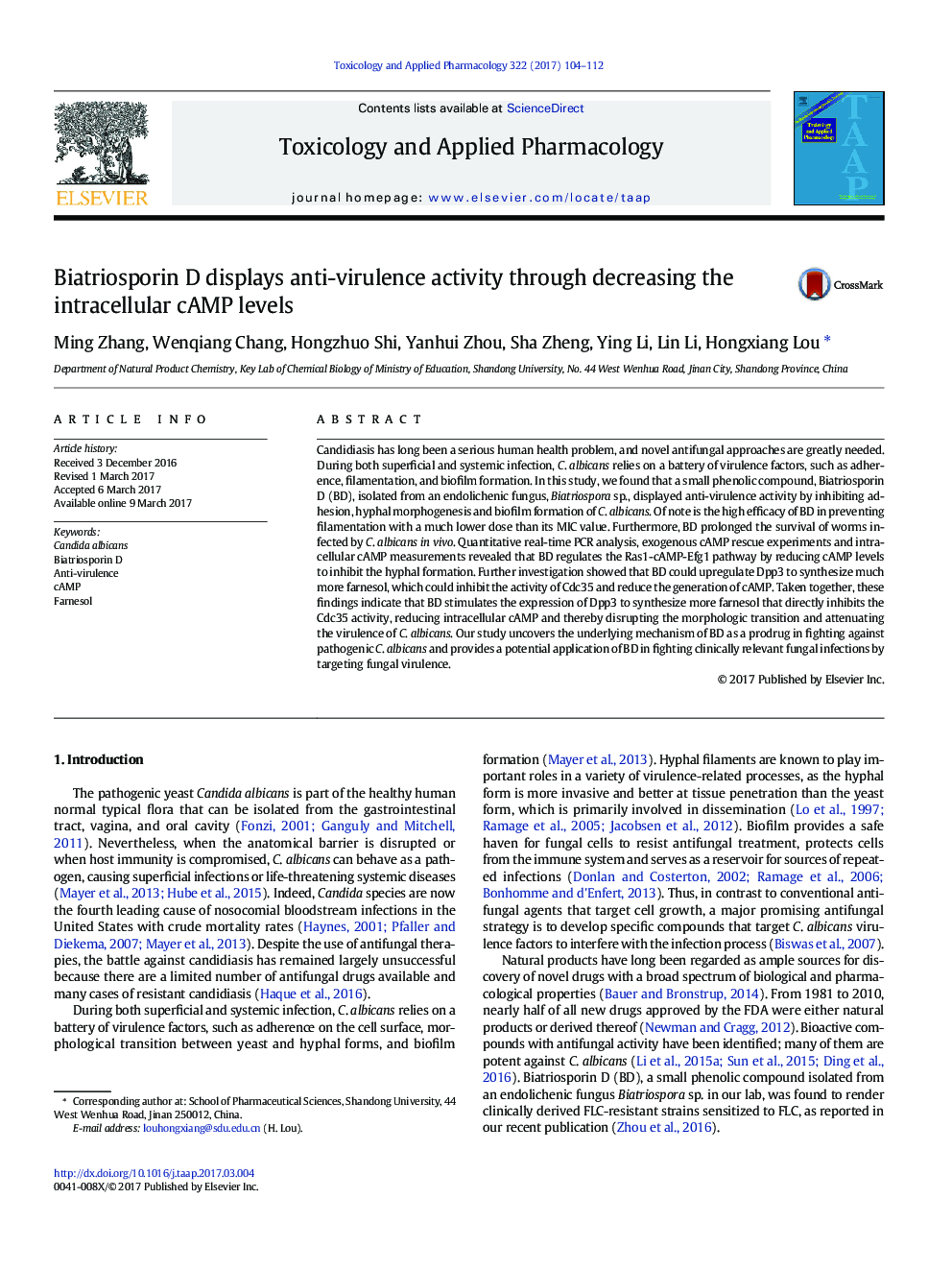| Article ID | Journal | Published Year | Pages | File Type |
|---|---|---|---|---|
| 5558326 | Toxicology and Applied Pharmacology | 2017 | 9 Pages |
â¢BD inhibits the filamentation of C. albicans in multiple hypha-inducing conditions.â¢BD can prolong the survival of nematodes infected by C. albicans.â¢BD stimulates the expression of Dpp3 to synthesize more farnesol.â¢BD reduces intracellular cAMP and regulates Ras1-cAMP-PKA pathway.
Candidiasis has long been a serious human health problem, and novel antifungal approaches are greatly needed. During both superficial and systemic infection, C. albicans relies on a battery of virulence factors, such as adherence, filamentation, and biofilm formation. In this study, we found that a small phenolic compound, Biatriosporin D (BD), isolated from an endolichenic fungus, Biatriospora sp., displayed anti-virulence activity by inhibiting adhesion, hyphal morphogenesis and biofilm formation of C. albicans. Of note is the high efficacy of BD in preventing filamentation with a much lower dose than its MIC value. Furthermore, BD prolonged the survival of worms infected by C. albicans in vivo. Quantitative real-time PCR analysis, exogenous cAMP rescue experiments and intracellular cAMP measurements revealed that BD regulates the Ras1-cAMP-Efg1 pathway by reducing cAMP levels to inhibit the hyphal formation. Further investigation showed that BD could upregulate Dpp3 to synthesize much more farnesol, which could inhibit the activity of Cdc35 and reduce the generation of cAMP. Taken together, these findings indicate that BD stimulates the expression of Dpp3 to synthesize more farnesol that directly inhibits the Cdc35 activity, reducing intracellular cAMP and thereby disrupting the morphologic transition and attenuating the virulence of C. albicans. Our study uncovers the underlying mechanism of BD as a prodrug in fighting against pathogenic C. albicans and provides a potential application of BD in fighting clinically relevant fungal infections by targeting fungal virulence.
